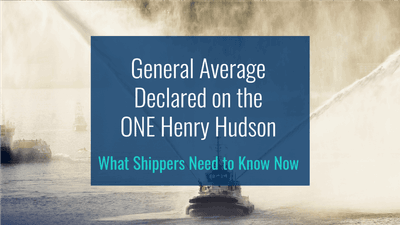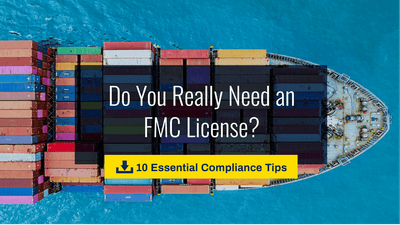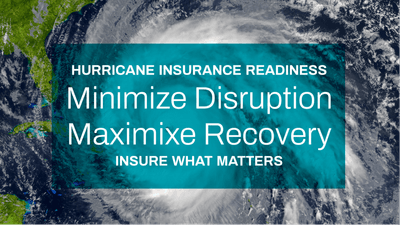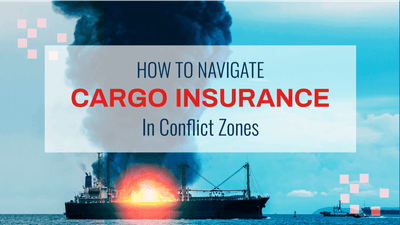May 16, 2019 | Cargo Insurance, Industry Insights
Minimizing Ship Risks: Choosing the Right Vessel for Project Needs
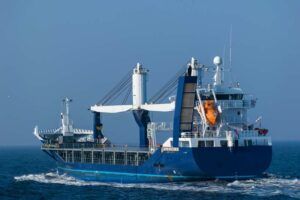
Multipurpose covers a huge variation of vessels including heavy-lift capability, but all are typically geared with some type of crane or derrick. In this modern age, multipurpose vessels will also have hatch openings that allow full access to ’tween decks and lower holds. While ’tween decks can be fixed but often flexible in their location, lower holds can often stretch the full length of the allowable cargo area. Some multipurpose vessels have lift-on, lift-off; roll-on, roll-off; or float-on, floatoff capabilities, and many have container carrying facilities, both in the hold and on deck.
Tony Betteridge, head of marine – Asia at Munich Re Syndicate, agrees with me that the ideal for most underwriters, risk engineers and seafarers is that breakbulk cargoes should only be carried on vessels that allow full access to the stowage location and have their own lifting gear, so that vessels are not dependent upon port infrastructure for
load or discharge operations.
In addition, the ability to weld seafastenings is a major advantage, although some multipurpose carriers prefer not to. In short, geared bulk carriers and multipurpose vessels deliver flexibility and, additionally, the ability to modify a stow plan late in the game should surprises pop up during loading.
Capt. Glenn Walker from Atlantic Marine Associates, or AMA, a worldwide surveying firm, points out additional risks associated using bulk carriers over multipurpose vessels. He lists the risks as a lack of deck strength, and a lack of adequate lashing equipment and points in cargo holds and/or on deck.
Betteridge adds that the ability to weld adequate sea fastenings on the tank top in the cargo holds of a bulk carrier will likely not be an option due to the lack of vessel structure and deck strengthening, as well as the close proximity to bunker tanks. When weldments are considered in the holds of bulk carriers, weldments on the deck should be aligned with vessel internals to cope with high accelerations. Geared bulk carriers may also lack suitable lifting equipment where
heavy-lifts are concerned.
In all events, the type of vessel needs to be properly evaluated where loading and securing of cargo is concerned in order to ensure suitability. Chief Engineer John Poulson, director from AMA’s New York office, offers advice on carrying nonhomogeneous cargo such as steel coils in conventional bulk carriers. Carrying such products can test side shell-plating and structure due to hydrostatics and hydrodynamics that cause panting in heavy weather due to non-homogenous cargo support from the inside. I’ve seen shell plating failures from this type of cargo carriage, so the condition of internals is very important.
PREMIUM SHIP CHOICE
With such flexibility, multipurpose project carriers have long been billed as the “premium” option for project cargo, but this doesn’t mean that all other vessel types are not also capable of successfully delivering project cargo or breakbulk. Market forces such as overall economic growth and oil prices add to the rollercoaster of supply and demand of specific vessel types, so in parts of the market cycle the very best vessel choice may not be available.
A project manager really needs to do some detective work to make sure that a vessel being presented is not only the best fit, but not a potential problem in waiting. Insurers have tremendous amounts of data at their fingertips and searching out vessel capabilities can be done with little effort.
Capt. Adrian McCourt, group chief engineer of the Munich Re Syndicate, gives some ship selection advice: “I would always look at port state inspection history and trading routes. It’s worth remembering, for example, regular callers to Australia which abruptly stop calling at Australian ports are sometimes avoiding the rigours of AMSA inspections. The quality of vessels can sometimes be guessed at when they are trading in non-aggressive inspection trades, such as Indonesia, Russia,
India, Philippines and South America – excluding Brazil.”
Capt. Walker recommends taking a solid look at the carrier’s reputation as it relates to vessel class society and vessel age. He notes there are more than 50 vessel classification societies that monitor the condition of vessels through a wide variety of inspections and not all classification societies are created equal. The International Association of Classification Societies is composed of 12 of the largest class societies and handles more than 90 percent of the world’s tonnage. His suggestion: look at who classes your choice of vessel.
Age of a vessel is also an indicator to vessel condition. Older vessels typically are in a poorer state of condition. When a vessel begins to approach the 15-year-old mark, therefore, you should know the age of the vessel. Typically, older vessels demand high insurance premiums.
TAKING RESPONSIBILITY
When vessels are chartered for the transport of project cargo, it is the charterer’s responsibility to provide a suitable vessel, ensure that it has a wellrecognized classification society, that all certificates are in date, that on-hire and suitability surveys are conducted, and that the lashing equipment is new and certified. High-level planning between owners, charterers, shippers and receivers or their representatives for the load outs is essential. Review that lashing materials, quantums, passage plans, weather forecasts and calculations are acceptable for the worst weather that may be experienced. There is no excuse for not performing all the requirements necessary to load and carry the cargo safely.
Additionally, the role of the cargo surveyor and risk engineers should also be fully appreciated. Cargo surveyors should not be there just to tick a box for cargo insurance requirements, and they should be selected on experience and ability rather than price. Like any other professional, surveyors all have their specialty, and it’s important to make sure they too have the experience. A quick check of their resume and a review of prior employment and projects can prove helpful.
The best advice I can give when it comes to project cargo is that all vendors need to take on some role of risk management in the decisions or solutions they offer, and perhaps project owners need to emphasize this in their engagement. I suggest this as nobody wants a cargo claim, and even with insurance, including “Delay in Start Up” coverage, no loss is fully covered. A holistic approach to project risk management must be the guiding force and not simply up-front costs.

